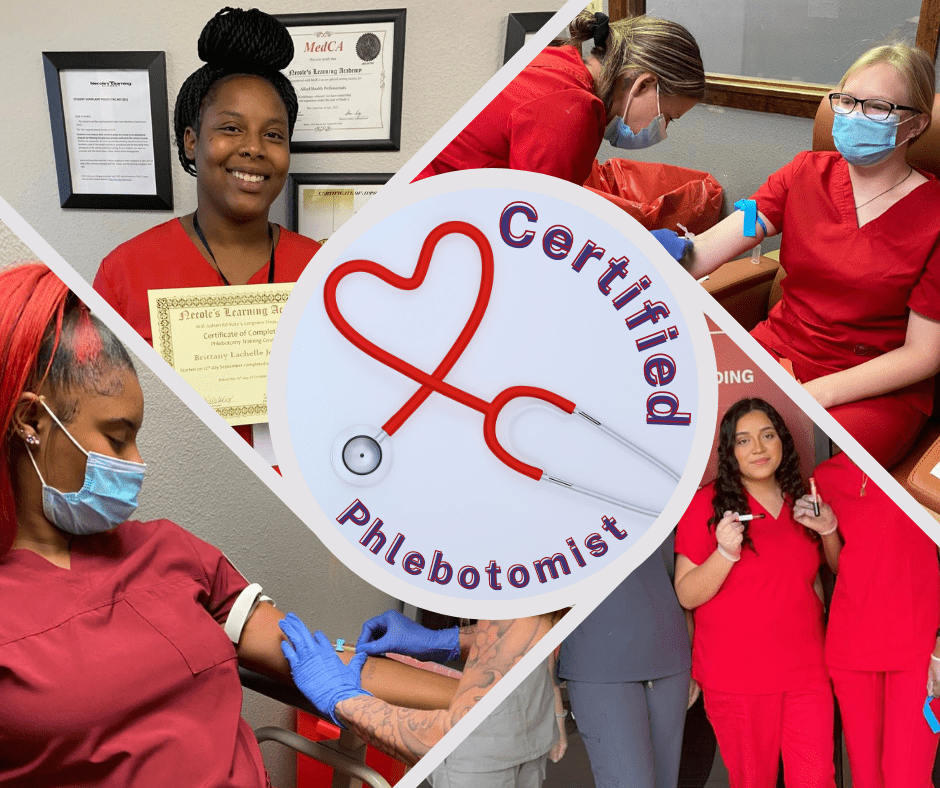Some Known Factual Statements About Northeast Medical Institute - New Haven Campus Phlebotomy Course & Cna Class
Some Known Factual Statements About Northeast Medical Institute - New Haven Campus Phlebotomy Course & Cna Class
Blog Article
8 Simple Techniques For Northeast Medical Institute - New Haven Campus Phlebotomy Course & Cna Class
Table of ContentsHow Northeast Medical Institute - New Haven Campus Phlebotomy Course & Cna Class can Save You Time, Stress, and Money.The Ultimate Guide To Northeast Medical Institute - New Haven Campus Phlebotomy Course & Cna ClassThe Only Guide for Northeast Medical Institute - New Haven Campus Phlebotomy Course & Cna ClassSome Ideas on Northeast Medical Institute - New Haven Campus Phlebotomy Course & Cna Class You Should KnowNortheast Medical Institute - New Haven Campus Phlebotomy Course & Cna Class - The FactsSome Known Factual Statements About Northeast Medical Institute - New Haven Campus Phlebotomy Course & Cna Class
Nevertheless, making use of such devices ought to be gone along with by various other infection avoidance and control methods, and training in their use. Not all safety tools are relevant to phlebotomy. Before selecting a safety-engineered tool, customers should completely explore available tools to establish their suitable use, compatibility with existing phlebotomy techniques, and effectiveness in safeguarding team and individuals (12, 33).For settings with reduced resources, price is a driving consider procurement of safety-engineered gadgets - PCT Training. Where safety-engineered gadgets are not readily available, knowledgeable use of a needle and syringe serves. Unintentional exposure and details information regarding an incident must be taped in a register. Assistance services must be advertised for those who undergo unexpected direct exposure.
In the blood-sampling area for an outpatient division or clinic, give a comfy reclining couch with an arm remainder.
Some Known Details About Northeast Medical Institute - New Haven Campus Phlebotomy Course & Cna Class
Ensure that the indications for blood tasting are clearly defined, either in a written procedure or in recorded directions (e.g. in a laboratory kind). In all times, comply with the strategies for infection prevention and control provided in Table 2.2. Infection avoidance and control practices. Gather all the tools needed for the procedure and area it within secure and easy reach on a tray or trolley, making certain that all the items are clearly noticeable.
Where the client is adult and mindful, comply with the steps detailed below. Introduce yourself to the client, and ask the client to specify their complete name. Inspect that the lab type matches the client's identification (i.e. match the client's information with the lab form, to ensure accurate recognition). Ask whether the license has allergic reactions, fears or has ever fainted throughout previous shots or blood draws.
Make the client comfy in a supine setting (if possible). The person has a right to decline a test at any kind of time before the blood tasting, so it is essential to ensure that the individual has recognized the procedure - CNA Training.
Get This Report on Northeast Medical Institute - New Haven Campus Phlebotomy Course & Cna Class
Expand the client's arm and check the antecubital fossa or lower arm. Locate a blood vessel of a good size that shows up, straight and clear. The representation in Section 2.3, shows common settings of the vessels, but lots of variants are feasible. The typical cubital vein lies in between muscles and is typically the most simple to pierce.
DO NOT place the needle where capillaries are diverting, due to the fact that this raises the opportunity of a haematoma. Finding the capillary will aid in establishing the proper dimension of needle.
Haemolysis, contamination and existence of intravenous fluid and medication can all modify the results (39. Nursing staff and medical professionals might access central venous lines for specimens following methods. Specimens from main lines carry a threat of contamination or erroneous lab examination results. It serves, but not excellent, to injure samplings when first presenting an in-dwelling venous tool, before attaching the cannula to the intravenous liquids.
Getting The Northeast Medical Institute - New Haven Campus Phlebotomy Course & Cna Class To Work
Allow the area to completely dry. Failing to allow enough contact time increases the risk of contamination. DO NOT touch the cleaned website; particularly, DO NOT position a finger over the capillary to assist the shaft of the subjected needle. It the site is touched, repeat the disinfection. Perform venepuncture as follows.
Ask the individual to form a fist so the blood vessels are extra noticeable. Go into the vein promptly at a 30 level angle or less, and remain to present the needle along the blood vessel at the easiest angle of access - PCT Courses. When sufficient blood has actually been gathered, launch the tourniquet BEFORE withdrawing the needle
Unknown Facts About Northeast Medical Institute - New Haven Campus Phlebotomy Course & Cna Class
Withdraw the needle delicately and use mild pressure to the website with a tidy gauze or completely dry cotton-wool sphere. Ask the person to hold the gauze or cotton wool in location, with the arm extended and increased. Ask the client NOT to bend the arm, since doing so creates a haematoma.

All about Northeast Medical Institute - New Haven Campus Phlebotomy Course & Cna Class
Do not press the syringe plunger because extra stress raises the risk of haemolysis. Where possible, keep the tubes in a shelf and move the shelf towards you. Infuse downwards into the suitable coloured stopper. DO NOT get rid of the stopper due to the fact that it will certainly release the vacuum. If the sample tube does not have a rubber stopper, inject extremely gradually into the tube as decreasing the pressure and speed made use of to move the specimen decreases the threat of haemolysis.

Report this page